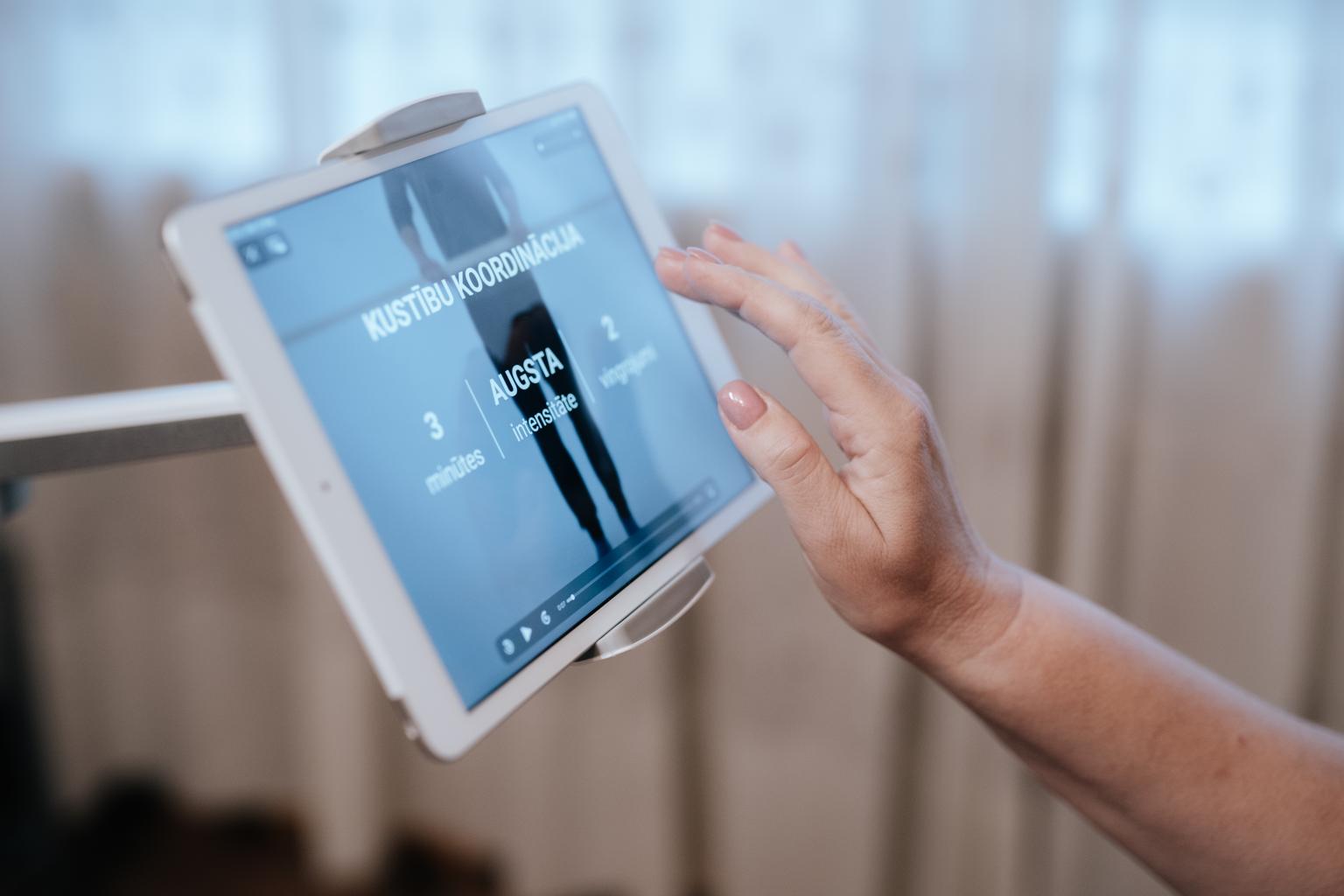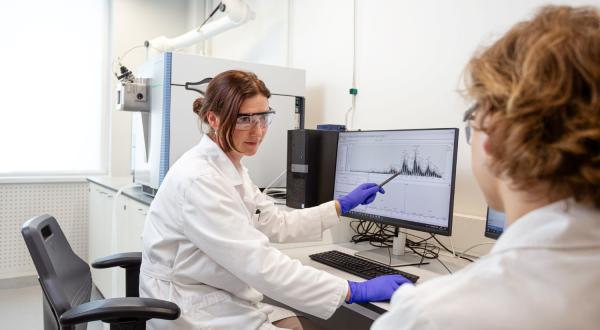Cooperation Between RSU and Start-Up Vigo Health Has Resulted in Improved App and Publication in Scientific Journal
A while ago, Žaneta’s mother-in-law – although older, but otherwise perfectly healthy – collapsed suddenly in her apartment. A clot had entered the blood vessels in the brain, causing rapid cell death or, in short, a stroke. When her mother-in-law was discharged from the hospital and it became clear that she would be bedridden for the rest of her life, a desperate search for information began. What rehabilitation process should be used? How should the home environment be adapted? What benefits and social security is available? How can the patient be supported emotionally as well as physically? If Žaneta and her family had known of the Vigo Health app at the time, this would have significantly shortened the time they spent searching for answers and solutions.
Approximately 7,000–8,000 people are hospitalised after strokes every year in Latvia according to the Centre for Disease Prevention and Control's data. According to the World Health Organization, one third of patients suffer a fatal stroke, while the rest experience a sharp decline in quality of life. If rehabilitation is possible, this turns into a costly process for stroke patients in Latvia, and is often implemented too late. To solve this problem with digital technologies, health care innovation developer Kristaps Krafte joined forces with neurosurgeon Jānis Šlēziņš and created the app Vigo.

Photo from Vigo Health archive
The purpose of the app is to provide stroke survivors with a comprehensive and effective assistant in their rehabilitation process. The app consists of three parts: the first provides extensive information about stroke; the second offers a personalised physiotherapy plan, covering both patients who need to regain mobility and those who are ready for strength training. This section has been developed in cooperation with the Vaivari National Rehabilitation Centre. The third part of the app offers emotional support to patients experiencing anxiety, lack of motivation or depression. The app is intended for both patients and their families, who play a valuable role in the recovery process.
Scandinavian Experience
The idea for this type of digital assistant came to Krafte when he led a research study on the organisation of stroke treatment at Bispebjerg Hospital in Copenhagen and at Pauls Stradiņš Clinical University Hospital. He noticed that one of the biggest problems for stroke survivors is access to rehabilitation services. After returning to Latvia, Krafte founded a start-up called Vigo Health (formerly Vigobot). While he was working on the app he realised that it was necessary to attract experienced researchers, so he contacted the pioneer of rehabilitation in Latvia – Professor Aivars Vētra. The Professor then connected the innovators with Guna Bērziņa, the leading researcher of the Rehabilitation Research Laboratory he manages. Krafte had heard about her from her Danish colleagues, who were familiar with Bērziņa’s research that she had conducted in collaboration with the Institute of Neuroscience and Physiology at the University of Gothenburg in Sweden. As a result, a one-and-a-half-year-long collaboration project, led by Bērziņa, was launched, and involved occupational therapist and master’s student Klinta Epalte and medical resident Ksenija Miščenko. ‘The app was under development at the time, so it was important to explore its strengths and weaknesses to help it evolve in a way that would provide the maximum possible benefit to its users,’ the researcher said summarising their work.
Like many other diseases, strokes increasingly occur in younger people. The average age of the 12 users involved in the study was only 50, but researchers explain that this doesn’t necessarily reflect wider statistics, but rather the fact that younger people are generally more open to using digital technologies. The interaction with patients was long-term – interviews took place after five days, then seven days, two weeks and a month, assessing the usability, perceptibility and functionality of the app. COVID-19 slightly disrupted the project’s progress, because it was not possible to visit the patients to train them to use the app on a tablet in the spring. Bērziņa is now proud that the project has been completed, albeit with a slight delay. Overall, users rated Vigo as easily understandable and convenient both in terms of design and content. Most of the suggestions for improvement were related to the physiotherapy section, which offers a personalised exercise plan. ‘This is probably because Vigo initially focused on stroke patients in general, but outcomes are more accurate outcome when treatment focuses on a specific target group, such as patients who do not need complex inpatient treatment,' says Bērziņa. In addition to her research, Bērziņa works as a physical and rehabilitation medicine doctor at the Riga East University Hospital. Working in a hospital reminds her daily that no app will ever be able to completely replace the extensive team of rehabilitation specialists – rehabilitation doctors, physiotherapists, occupational therapists, audiologists, technical orthopaedists, art therapists, nutrition specialists and many other experts. ‘But that’s not what Vigo aims to do – it’s an assistant,’ the researcher emphasises, adding that she was happy to see how the app that initially was quite simple had improved during the collaborative process.
The number of patients is growing, but the number of doctors is not
Krafte, the Head of Vigo Health, is also satisfied with the cooperation. ‘We have gained valuable information about the usability of Vigo, which will serve as a basis for the ongoing UX/UI [user experience / user interface - ed.] redesign process and adding content to the app, which is no less important. In the coming months, users will have access to a new and improved version of the app,’ he says. The entrepreneur’s future plans have no geographical boundaries – plans to start working in the largest European markets and the USA are underway. ‘But the first step is to make the Vigo app as accessible as possible in Latvia, so inevitably we have to move towards state-paid services. It is not easy and takes time, but the need is very pressing, and not only in Latvia. The availability of stroke rehabilitation services is a global challenge as the number of stroke cases increase, while the number of doctors and specialists does not. Digital solutions help people, and they like them, and this encourages us not to give up,’ says Krafte.
According to Prof. Vētra, who created the first physiotherapy study programme in Latvia in the 1990s and now also participates in digital rehabilitation, COVID-19 is currently showing us the need for remote medical services worldwide, and the demand for virtual rehabilitation solutions will only grow. The Professor is proud that the work researchers have done in his laboratory has helped this digital assistant to “get stronger” and develop its artificial intelligence base, becoming more convenient, understandable and suitable for a person who has suffered a stroke. Another outcome of this cooperation to be proud of is a publication in the international scientific journal Disability and Rehabilitation: Assistive Technology. ‘The academic ambitions of any research include publication in an internationally cited journal, and now researchers around the world will be able to read about Latvian rehabilitologists’ competence and the start-up, concludes Bērziņa.




